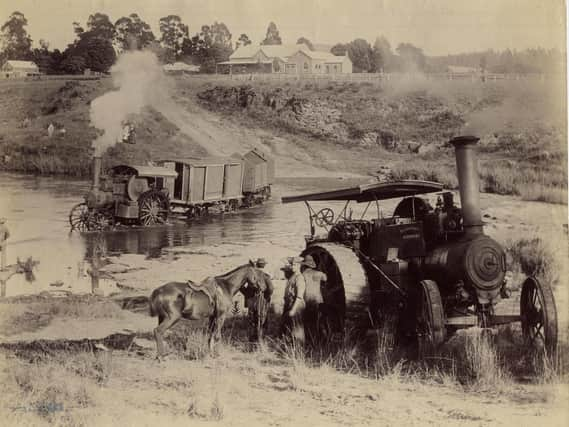The hidden history of Leeds’s magnificent machines


But their unrivalled efficiency was also harnessed to support the growth of huge mining, railway and forced labour operations in hundreds of colonial territories.
Now thanks to an innovative partnership project at Leeds Industrial Museum, new light is being shed on the complex legacy of the city’s world famous machines.
Advertisement
Hide AdAdvertisement
Hide AdThrough a fascinating collection of archive material and images, curators at the Armley Museum and historians at Heritage Corner are working together to re-examine the many
different ways Leeds-made locomotives and engines were used.
Exporting engineering and railway products had enabled Leeds companies to amass vast fortunes over hundreds of years, which in turn boosted the growth and success of the city
and an industrial hub.
Many of those companies were also heavily involved in supplying equipment for empire-building by Britain and other colonial powers in places like Sierra Leone, where Leeds loco
Advertisement
Hide AdAdvertisement
Hide Adbuilders Hunslet Engine Co. and Hudswell Clarke exported at least 103 locomotives which were put to work on the controversial Sierra Leone Government Railway.
Colonial railways were usually built so valuable natural resources like ores, diamonds, gold, palm oil and groundnuts could be extracted more efficiently from occupied territories and
local populations were often taxed to cover the costs of building them.
Gildersome company Robert Hudson also completed a huge order in 1924 for the Loanda Railway in then Portuguese West Africa, which The League of Nations later found was built
using forced labour.
Advertisement
Hide AdAdvertisement
Hide AdJohn McGoldrick, Leeds Museums and Galleries’ curator of Industrial History, said: “Leeds quite rightly has a long and proud history as an industrial trailblazer and a city which led the
way in invention and innovation.
“But that success came at a price for people from other parts of the world, where Leeds- made machines were a driving force behind colonial expansion and the widespread
plundering of natural resources.
“By using the knowledge and resources we have today and working with organisations like Heritage Corner, we can acknowledge the different and contrasting aspects of our city’s
heritage and present a more balanced and complete picture to our visitors.”
Advertisement
Hide AdAdvertisement
Hide AdAlready on display at the museum is Leeds locomotive Aldwyth, twinned with another Manning Wardle locomotive Nellie which was built for the Sierra Leone Government
Railway in 1915. The museum has previously worked with Heritage Corner to explore those links and the historic African presence in Yorkshire.
************************
A message from the Editor:
Leeds has a fantastic story to tell - and the Yorkshire Evening Post has been rooted firmly at the heart of telling the stories of our city since 1890. We believe in ourselves and hope you believe in us too. We need your support to help ensure we can continue to be at the heart of life in Leeds.
Subscribe to our website and enjoy unlimited access to local news and information online and on our app. With a digital subscription, you can read more than 5 articles, see fewer ads, enjoy faster load times, and get access to exclusive newsletters and content. Click here to subscribe. For more details on our newspaper subscription offers click here.
Thank you
Laura Collins
Comment Guidelines
National World encourages reader discussion on our stories. User feedback, insights and back-and-forth exchanges add a rich layer of context to reporting. Please review our Community Guidelines before commenting.